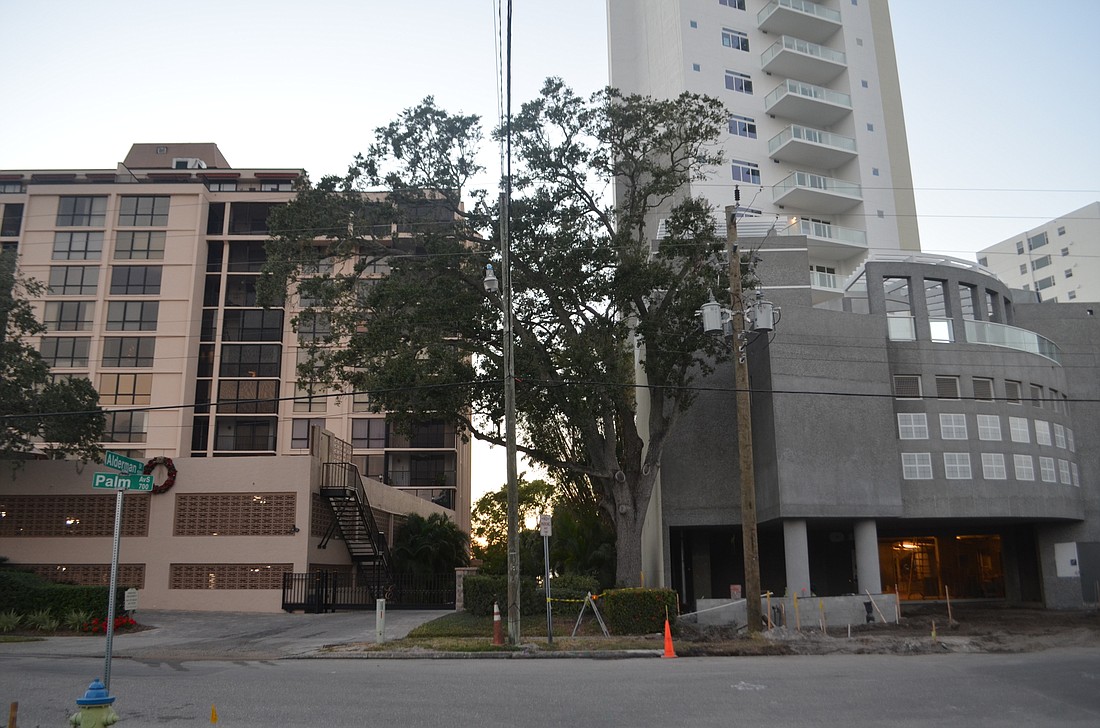- May 2, 2025
-
-
Loading

Loading

Managing the effect of new development in a crowded urban area is complicated, but city officials are certain about at least one thing: Residents have legitimate concerns about the safety of downtown construction sites.
“The problems you’ve heard associated with this are real,” City Attorney Robert Fournier said. “The inconvenience and the safety issues — as far as I’m concerned, those matters aren’t in dispute.”
For the past year, the city has listened to complaints from people living downtown regarding the effects of neighboring construction. The problems include falling debris, intrusions onto private property, blocked streets and sidewalks and more.
How, then, can the city address those issues? The options may be limited, Fournier said.
The City Commission focused Monday on one aspect of the problem. Many residents believe zoning regulations are exacerbating the effects of construction. In downtown, developers are entitled to build to their property lines, which means construction is taking place on the edge of someone else’s property.
A 2002 downtown master plan eliminated minimum setback rules for many properties. On South Palm Avenue, between Ringling Avenue and Mound Street, developers once had to set back buildings 30 feet from the side lot lines. Today, there’s a zero-foot minimum setback.
Tim Litchet, the city’s director of Neighborhood and Development Services, said the regulations make it hard to manage construction in an area that’s already heavily developed. Although the principles of the 2002 master plan may have been well-intentioned — creating a more walkable, more urbanized city center — he questioned whether officials thought about the practicality of applying those standards to an already developed segment of the city.
“Sometimes as you adopt things and actually implement things, you learn it’s not working very well,” Litchet said. “And I think we’re getting an up-close lesson now.”
Fournier walked through the legality of some options staff has considered as a means of addressing the issue. He thinks the city could require a builder to install netting above an adjacent private property, for example.
It can’t, however, force a private property owner to place safety equipment on their land, even if staff believes it’s necessary to mitigate the potential impacts of neighboring construction.
It also can’t require a developer to reach an agreement on construction staging with the neighboring property owner before starting to build. And it can’t force a developer to set back its proposed building from the property line if a neighboring property owner doesn’t consent to the use of its land for staging.
In other words, even if the city foresees a potential safety issue, it can’t tell a private property owner what to do with their land.
“Therein lies the problem, right?” Fournier asked.
Residents living near downtown construction sites continue to push for some action from the city.
Residents living near downtown construction sites continue to push for some action from the city. The Essex House condominium on Palm Avenue has raised a series of concerns about the neighboring 18-story 624 Palm condo, which is still being built. Essex House resident Lottie Varano asked the city to simply eliminate the sections of the code that permit zero-setback construction.
The Downtown Sarasota Condominium Association has endorsed a change to the zoning code that would mandate setbacks on the segment of Palm Avenue and Gulfstream Avenue between Ringling and Mound. Fournier said the city would be entitled to rezone those properties to a non-downtown land use category that requires setbacks, if the commission desires.
However, at Monday’s meeting, residents of the Regency House condominium at 435 S. Gulfstream Ave. spoke in opposition to zoning changes that would only apply to a few streets. Although some of the residents said they were concerned about construction, they asked the city to take a broader look at how regulations could better address safety issues.
Regency House residents said targeted changes would negatively affect the property values in the area. They also encouraged a balance between the existing zero-setback regulations and the pre-2002 regulations that mandated wide setbacks.
“We live in the downtown core, not suburbia,” Regency House resident Crome Dollase said. “We need to avoid lawsuits and respect the vested property rights and values of others.”
The commission hopes to address these issues in a new form-based zoning code, a draft of which will be completed early next year. Shortly after, the city plans to hold a special meeting specifically focused on setback regulations and construction impacts.
Litchet said he hopes that conversation will focus on how those regulations work in practice, not just in theory. As it stands, he said, he’s frustrated the city isn’t able to do more to address residents’ concerns.
“My staff has such limited options sometimes,” Litchet said. “When the 180-foot building is built zero feet from the neighboring property — not even an inch back — it provides challenges.”